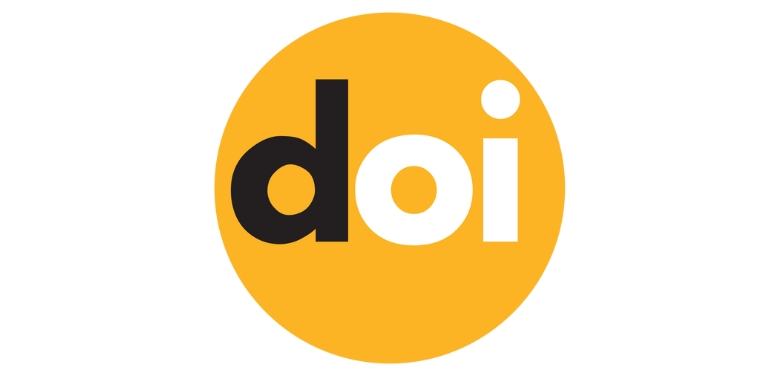Neuro Management and Leadership
DOI:
https://doi.org/10.63053/ijhes.68Keywords:
NeuroLeadership, NeuroManagementAbstract
Objective: NeuroManagement integrates principles from neuroscience into the realm of management and leadership. It involves understanding how the human brain functions in decision-making, communication, motivation, and behavior within organizational contexts. This conceptual paper explores how Neuro-leadership will serve as a link between psychological theories and organizational neuroscience.
Materials and Methods: This conceptual paper explores how Neuro-leadership will serve as a link between psychological theories and organizational neuroscience. the purpose of the study has been to review the literature by means of systematic literature analysis. Google Scholar and PubMed search engines were used to review the studies. The keywords NeuroLeadership, NeuroManagement, organizational were used. 122 articles were found. Irrelevant articles, which included 64 articles, were removed and 58 related articles were reviewed and analyzed.
Discussion: Neuro Management serves as a vital bridge between scientific insights derived from neuroscience and the practical application of these insights in effective leadership. Future leaders are expected to be more responsive, flexible, and adaptive while accomplishing company targets. A new direction in leadership studies has arisen with the recent advances in brain research, which aims at finding a relationship between the changes in context and organizational transformation.
Conclusions: Neuro Management stands as a pivotal discipline reshaping modern leadership and organizational paradigms by leveraging insights from neuroscience. In a general sense, NeuroLeadership refers to the realization of neuroscience-based findings in institutions within effective leadership. Increasing studies on the subject and explanation of learning processes in light of their biological basis have produced evidence-based strategies for leaders to manage their teaching and management processes more effectively.
References
Aboramadan, M., & Kundi, Y. M. (2023). Emotional culture of joy and happiness at work as a facet of wellbeing: a mediation of psychological safety and relational attachment. Personnel Review, 52(9), 2133–2152. https://doi.org/10.1108/PR-04-2021-0285 DOI: https://doi.org/10.1108/PR-04-2021-0285
Aithal, P. S., & Satpathy, C. P. D. J. (2024). Exploring Neuro Management : Bridging Science and Leadership – An Overview Exploring Neuro Management : Bridging Science and Leadership – An Overview. 8(2), 39–73. DOI: https://doi.org/10.47992/IJAEML.2581.7000.0223
Algumaei, M., Hettiarachchi, I. T., Farghaly, M., & Bhatti, A. (2023). The Neuroscience of Team Dynamics: Exploring Neurophysiological Measures for Assessing Team Performance. IEEE Access, 11, 129173–129194. DOI: https://doi.org/10.1109/ACCESS.2023.3332907
Angrave, D., Charlwood, A., Kirkpatrick, I., Lawrence, M., & Stuart, M. (2016). HR and analytics: why HR is set to fail the big data challenge. Human Resource Management Journal, 26(1), 1–11. https://doi.org/10.1111/1748-8583.12090 DOI: https://doi.org/10.1111/1748-8583.12090
Barsade, S. G. (2002). The ripple effect: Emotional contagion and its influence on group behavior. Administrative Science Quarterly, 47(4), 644–675. DOI: https://doi.org/10.2307/3094912
Bass, B. M., Avolio, B. J., & Binghamton, S.-. (1985). TRANSFORMATIONAL LEADERSHIP AND ORGANIZATIONAL CULTURE.
bidin A. (2017). Опыт аудита обеспечения качества и безопасности медицинской деятельности в медицинской организации по разделу «Эпидемиологическая безопасностьNo Title. Вестник Росздравнадзора, 4(1), 9–15.
Boyatzis, R., & McKee, A. (2011). Neuroscience and leadership: The promise of insights. Ivey Business Journal, 75(1), 1–3.
boyzatzis & mckee 2006. (2006). No Title. December.
Camerer, C., Loewenstein, G., & Prelec, D. (2005). Neuroeconomics: How neuroscience can inform economics. Journal of Economic Literature, 43(1), 9–64. DOI: https://doi.org/10.1257/0022051053737843
Cherniss, C., Extein, M., Goleman, D., & Weissberg, R. P. (2006). Emotional intelligence: what does the research really indicate? Educational Psychologist, 41(4), 239–245. DOI: https://doi.org/10.1207/s15326985ep4104_4
conger&kanungo. (n.d.).
Damasio, A. (2003). Feelings of emotion and the self. Annals of the New York Academy of Sciences, 1001(1), 253–261. DOI: https://doi.org/10.1196/annals.1279.014
david rock. (2010). THE NEUROSCIENCE OF LEADERSHIP. March.
Deci, E. L., & Ryan, R. M. (2000). The “ What ” and “ Why ” of Goal Pursuits : Human Needs and the Self-Determination of Behavior. 11(4), 227–268. DOI: https://doi.org/10.1207/S15327965PLI1104_01
Eisenbach, R., Watson, K., & Pillai, R. (1999). Transformational leadership in the context of organizational change. Journal of Organizational Change Management, 12(2), 80–89. https://doi.org/10.1108/09534819910263631 DOI: https://doi.org/10.1108/09534819910263631
George, J. M. (2007). 9 Creativity in organizations. Academy of Management Annals, 1(1), 439–477. DOI: https://doi.org/10.5465/078559814
Gocen, A. (2021). Neuroleadership: A conceptual analysis and educational implications. International Journal of Education in Mathematics, Science and Technology, 9(1), 63–82. https://doi.org/10.46328/ijemst.1237 DOI: https://doi.org/10.46328/ijemst.1237
Gómez-Leal, R., Holzer, A. A., Bradley, C., Fernández-Berrocal, P., & Patti, J. (2022). The relationship between emotional intelligence and leadership in school leaders: A systematic review. Cambridge Journal of Education, 52(1), 1–21. DOI: https://doi.org/10.1080/0305764X.2021.1927987
Handayani, B. S., & Corebima, A. D. (2017). Model brain based learning (BBL) and whole brain teaching (WBT) in learning. International Journal of Science and Applied Science: Conference Series, 1(2), 153–161. DOI: https://doi.org/10.20961/ijsascs.v1i2.5142
Hatfield, E., Cacioppo, J. T., & Rapson, R. L. (1993). Emotional contagion. Current Directions in Psychological Science, 2(3), 96–100. DOI: https://doi.org/10.1111/1467-8721.ep10770953
Houlihan, S. (2018). Dual-process models of health-related behaviour and cognition: a review of theory. Public Health, 156, 52–59. DOI: https://doi.org/10.1016/j.puhe.2017.11.002
Jom, I. (2020). Neuro -Economic ’ Agent ’ In Business Transformation. 7(December 2019).
Kahneman, D., & Tversky, A. (1972). Subjective probability: A judgment of representativeness. Cognitive Psychology, 3(3), 430–454. DOI: https://doi.org/10.1016/0010-0285(72)90016-3
Lambe, K. A., O’Reilly, G., Kelly, B. D., & Curristan, S. (2016). Dual-process cognitive interventions to enhance diagnostic reasoning: a systematic review. BMJ Quality & Safety, 25(10), 808–820. DOI: https://doi.org/10.1136/bmjqs-2015-004417
Lieberman, M. D. (2010). Social cognitive neuroscience. Handbook of Social Psychology, 5, 143–193. DOI: https://doi.org/10.1002/9780470561119.socpsy001005
Lindebaum, D., & Zundel, M. (2013). Not quite a revolution: Scrutinizing organizational neuroscience in leadership studies. Human Relations, 66(6), 857–877. https://doi.org/10.1177/0018726713482151 DOI: https://doi.org/10.1177/0018726713482151
McCleskey, J. (2014). Emotional intelligence and leadership: A review of the progress, controversy, and criticism. International Journal of Organizational Analysis, 22(1), 76–93. DOI: https://doi.org/10.1108/IJOA-03-2012-0568
Mercader, V., Herrera, E. A., & Corrales, M. R. (2021). Empowerment and support of senior management in promoting happiness at work. May. https://doi.org/10.1108/CG-05-2021-0200
Okeyo, P. W., Zealand, N., Jo, P., Rolle, A., Subramaniam, P. K., & Aithal, P. P. S. (n.d.). Neuro - signatures in c-3 economic decisions.
Oliver, M. (2011). Towards an understanding of neuroscience for science educators. Studies in Science Education, 47(2), 211–235. DOI: https://doi.org/10.1080/03057267.2011.604478
Opris, I., Ionescu, S. C., Lebedev, M. A., Boy, F., Lewinski, P., & Ballerini, L. (2020). Application of neural technology to neuro-management and neuro-marketing. Frontiers in Neuroscience, 14, 522586. DOI: https://doi.org/10.3389/fnins.2020.00053
Parincu, A. M. T., Capatina, A., Varon, D. J., Bennet, P. F., & Recuerda, A. M. (2020). Neuromanagement: the scientific approach to contemporary management. Proceedings of the International Conference on Business Excellence, 14(1), 1046–1056. DOI: https://doi.org/10.2478/picbe-2020-0099
Rainey, S., & Erden, Y. J. (2020). Correcting the Brain? The Convergence of Neuroscience, Neurotechnology, Psychiatry, and Artificial Intelligence. Science and Engineering Ethics, 26(5), 2439–2454. https://doi.org/10.1007/s11948-020-00240-2 DOI: https://doi.org/10.1007/s11948-020-00240-2
Rajab, S., & Sharma, V. (2018). A review on the applications of neuro-fuzzy systems in business. Artificial Intelligence Review, 49(4), 481–510. https://doi.org/10.1007/s10462-016-9536-0 DOI: https://doi.org/10.1007/s10462-016-9536-0
Rock, D. (2006). A Brain-Based Approach to Coaching. 4(2), 32–44.
Rock, D. (2018). A neuroscience-based approach to changing organizational behaviour. Healthcare Management Forum, 31(3), 77–80. https://doi.org/10.1177/0840470417753968 DOI: https://doi.org/10.1177/0840470417753968
Rock, D., & Schwartz, J. (2006). The neuroscience of leadership. Strategy+ Business, 43.
Ruiz-rodríguez, R., Ortiz-de-urbina-criado, M., & Ravina-ripoll, R. (2023). management. 1–14. https://doi.org/10.1057/s41599-023-01642-w DOI: https://doi.org/10.1504/IJHD.2023.10060264
Sadri, G. (2012). Emotional intelligence and leadership development. Public Personnel Management, 41(3), 535–548. DOI: https://doi.org/10.1177/009102601204100308
Sanfey, A. G. (2007). Decision neuroscience: New directions in studies of judgment and decision making. Current Directions in Psychological Science, 16(3), 151–155. DOI: https://doi.org/10.1111/j.1467-8721.2007.00494.x
Saruhan, N. (2023). The Impact of Organizational Neuroscience and Self-determination Theory on Neuro-Leadership Theory. 65–72. https://doi.org/10.26650/imj.2023.94.006 DOI: https://doi.org/10.26650/imj.2023.94.006
Satpathy, C. J., & Altucher, J. (2019). European Journal of Business & Endoscopic View of Neuro - Preference Connectionism European Journal of Business &. 07(6), 182–202.
Satpathy, C. P. D. J. (2014). Dynamics of neuroeconomics decision-making. Available at SSRN 2509585. DOI: https://doi.org/10.2139/ssrn.2509585
Schwartz, J., Thomson, J., & Kleiner, A. (2016). The Neuroscience of Strategic Leadership Research shows how leaders can take the high road less traveled. www.strategy-business.com
Serra, D. (2021). Decision-making: from neuroscience to neuroeconomics—an overview. Theory and Decision, 91(1), 1–80. DOI: https://doi.org/10.1007/s11238-021-09830-3
Sharma, A. (2020). Neuro-management: a key to maintain performance. New Paradigms in Management and Social Sciences, 19.
Snyder, H. (2019). Literature review as a research methodology : An overview and guidelines. Journal of Business Research, 104(August), 333–339. https://doi.org/10.1016/j.jbusres.2019.07.039 DOI: https://doi.org/10.1016/j.jbusres.2019.07.039
Srivastava, S., Mendiratta, A., Pankaj, P., Misra, R., & Mendiratta, R. (2022). Happiness at work through spiritual leadership: a self-determination perspective. Employee Relations: The International Journal, 44(4), 972–992. https://doi.org/10.1108/ER-08-2021-0342 DOI: https://doi.org/10.1108/ER-08-2021-0342
Vartanian, O., & Mandel, D. R. (2011). Neuroscience of decision making. Psychology Press. DOI: https://doi.org/10.4324/9780203835920
Waldman, D. A., & Reina, C. (2014). A neuroscience perspective of emotions in the formation of shared vision. Academy of Management Proceedings, 2014(1), 13607. DOI: https://doi.org/10.5465/ambpp.2014.13607abstract
Wong, G., Greenhalgh, T., Westhorp, G., Buckingham, J., & Pawson, R. (2013). RAMESES publication standards : realist syntheses. DOI: https://doi.org/10.1186/1741-7015-11-21
Yoon, C., Gonzalez, R., Bechara, A., Berns, G. S., Dagher, A. A., Dubé, L., Huettel, S. A., Kable, J. W., Liberzon, I., & Plassmann, H. (2012). Decision neuroscience and consumer decision making. Marketing Letters, 23, 473–485. DOI: https://doi.org/10.1007/s11002-012-9188-z
Downloads
Published
How to Cite
Issue
Section
License
Copyright (c) 2024 Authors

This work is licensed under a Creative Commons Attribution 4.0 International License.
The journal is licensed under a Attribution 4.0 International (CC BY 4.0).
You are free to:
- Share — copy and redistribute the material in any medium or format for any purpose, even commercially.
- Adapt — remix, transform, and build upon the material for any purpose, even commercially.
- The licensor cannot revoke these freedoms as long as you follow the license terms.
Under the following terms:
- Attribution - You must give appropriate credit , provide a link to the license, and indicate if changes were made . You may do so in any reasonable manner, but not in any way that suggests the licensor endorses you or your use.
- No additional restrictions - You may not apply legal terms or technological measures that legally restrict others from doing anything the license permits.












